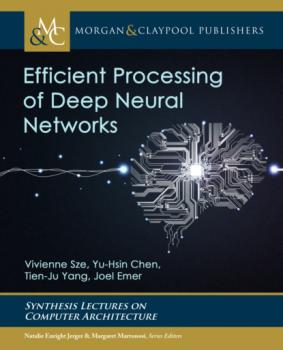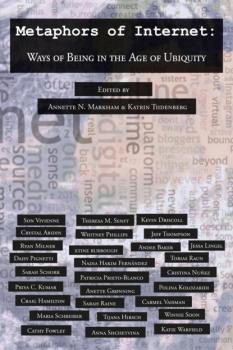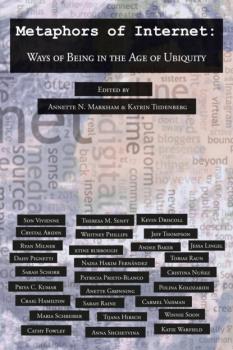Программы
Различные книги в жанре ПрограммыTheoretical Information Studies: Information In The World
This is the first attempt to delineate the synthetic field of the theoretical study of information, treating information as the basic phenomenon on the fundamental level of the world, encompassing nature, technology, individuals and society. The exploration of information is done within Info-computational approaches, to natural and social phenomena such as Bioinformatics, Information Physics, Informational Chemistry, Computational Physics, Cognitive and Social sciences, with special emphasis on interdisciplinary, crossdisciplinary and transdisciplinary knowledge. The book presents results of collaboration across research fields within info-computational and info-structural frameworks, in attempt to better theoretically and conceptually capture the phenomenon of information and its dynamics (such as computation and communication), as they appear on different levels of organization, on different scales and in different contexts. Contents: Introduction (Mark Burgin and Gordana Dodig-Crnković) Foundations of Information: A Multiscale Taxonomy of Information in the World (Mark Burgin and Gordana Dodig-Crnković) Regeneration of Information as Forced Expansion (Meir Buzaglo) Why is Entropy not Enough? – Good Emerges from the Relaxation between Order and Disorder (Wu Kun and Wang Jian) Qualitative Stance, Effective Procedures and Common Sense Computation (Gianmarco Tuccini, Roberta Lanfredini, and Luca Baronti) A Theory of Semantic Information in the Context of its Ecology (Yixin Zhong and Gordana Dodig-Crnković) Information as a Natural Phenomenon: The 'No Information at a Distance' Principle and Local Mathematics: Some Effects on Physics and Geometry (Paul Benioff) The Structure of the World, Unity of Nature and the Problem of Time (Rafael Capurro and Mark Burgin) The Debt of Natural Science: An Interview with Carl Friedrich von Weizsäcker (Rafael Capurro) The Molecular Linguistics of DNA: Letters, Words, Sentences, Texts, and their Meanings (Sungchul Ji) The Biology of Information (Robert K Logan) Towards a New Information Thinking — Biologically Inspired (Jorge Navarro and Pedro C Marijuán) Studies on Molecular Signaling Network Devices (Walter Riofrío) Evolution of Genetic Information without Error Replication (Guenther Witzany) Cognition and Intelligence in Natural and Artificial Systems: Information Processing by Structural Machines (Mark Burgin) Consciousness and Information — Before or After the Event (Ron Cottam and Roger Vounckx) Convergence of Natural Intelligence and Artificial Intelligence (Rao Mikkilineni) Social, Cultural, Ethical and Legal Aspects of Information: A Comparative Analysis of Traditional Western and Chinese Music from the Perspective of Complex Information System Theory (Gengxian Cao and Donghe Li) A Reasonable Model of Complexity for the Legal Domain (Cornelis N J de Vey Mestdagh) Reform and Innovation: The Social Sciences Research in Big Data Times (Ouyang Kang) The Differentia Specifica of Interhuman Communications: Luhmann and the Sociological Reflection of Information Theory (Loet Leydesdorff) Li Erqu's Theory on Epistemology and Gong Fu Ontology (Jun Liu) Law as Information and the Impact of Information Technologies (Ugo Pagallo) Information and Openness (Tomáš Sigmund) Readership: Graduate students and researchers in Information Theory.Information Science;Information Theory;Physics;Biology;Semantics;Computation;Ontology;Evolution;Networks;Artificial Intelligence;Complexity;Ecology0 Key Features: It covers the broadest range of phenomena related to information, with their structures and processes, as well as meta-level investigation of the nature of the study of information including its logic, metatheory and methodologiesIt provides the context and the substrate for research fields such as General Information Science, Practical Information Studies, Information Natural Sciences, and Information Social Sciences, developing information perspective on natural sciences, cognitive, social and ecological studiesIt builds the foundation for further studies into informational phenomena and their dynamics, that will increase in the future, in society on a whole. In particular, it is relevant for the understanding of technological developments and scientific progress, which becomes increasingly digitalized, that is, information-based
OCP Oracle Certified Professional Java SE 11 Developer Practice Tests
NOTE: The OCP Java SE 11 Programmer I Exam 1Z0-815 and Programmer II Exam 1Z0-816 have been retired (as of October 1, 2020), and Oracle has released a new Developer Exam 1Z0-819 to replace the previous exams. The Upgrade Exam 1Z0-817 remains the same. Improve your preparation for the OCP Java SE 11 Developer exam with these comprehensive practice tests OCP Oracle Certified Professional Java SE 11 Developer Practice Tests: Exam 1Z0-819 and Upgrade Exam 1Z0-817 offers readers over 1000 practice questions to help them hone their skills for the challenging 1Z0-819 exam as well as the 1Z0-817 upgrade exam. Covering all the objective domains that help readers master the crucial subject areas covered by the exam, OCP Oracle Certified Professional Java SE 11 Developer Practice Tests provides domain-by-domain questions as well as additional bonus practice exams to further solidify the reader’s mastery of its subjects. This book covers topics like: Understanding Java Technology and Environment Working with Java Operators, Primitives, and Strings Creating Methods and Lambda Expressions Designing Classes, Interfaces, Enums, and Annotations Writing Functional Interfaces and Streams Building Modules and Migrating Applications to Modules Applying I/O, NIO.2, JDBC, Threads, and Concurrency Secure Coding in Java SE Application And much more Perfect for anyone studying for the OCP Java SE 11 Developer and Upgrade exams, as well as all those who wish to brush up on their Java programming skills, OCP Oracle Certified Professional Java SE 11 Developer Practice Tests: Exam 1Z0-819 and Upgade Exam 1Z0-817 is an indispensable resource that has a place on the bookshelf of every Java enthusiast, professional, and student.
Semantic Web for the Working Ontologist
Enterprises have made amazing advances by taking advantage of data about their business to provide predictions and understanding of their customers, markets, and products. But as the world of business becomes more interconnected and global, enterprise data is no long a monolith; it is just a part of a vast web of data. Managing data on a world-wide scale is a key capability for any business today. The Semantic Web treats data as a distributed resource on the scale of the World Wide Web, and incorporates features to address the challenges of massive data distribution as part of its basic design. The aim of the first two editions was to motivate the Semantic Web technology stack from end-to-end; to describe not only what the Semantic Web standards are and how they work, but also what their goals are and why they were designed as they are. It tells a coherent story from beginning to end of how the standards work to manage a world-wide distributed web of knowledge in a meaningful way. The third edition builds on this foundation to bring Semantic Web practice to enterprise. Fabien Gandon joins Dean Allemang and Jim Hendler, bringing with him years of experience in global linked data, to open up the story to a modern view of global linked data. While the overall story is the same, the examples have been brought up to date and applied in a modern setting, where enterprise and global data come together as a living, linked network of data. Also included with the third edition, all of the data sets and queries are available online for study and experimentation at data.world/swwo.
Efficient Processing of Deep Neural Networks
This book provides a structured treatment of the key principles and techniques for enabling efficient processing of deep neural networks (DNNs). DNNs are currently widely used for many artificial intelligence (AI) applications, including computer vision, speech recognition, and robotics. While DNNs deliver state-of-the-art accuracy on many AI tasks, it comes at the cost of high computational complexity. Therefore, techniques that enable efficient processing of deep neural networks to improve key metrics—such as energy-efficiency, throughput, and latency—without sacrificing accuracy or increasing hardware costs are critical to enabling the wide deployment of DNNs in AI systems. The book includes background on DNN processing; a description and taxonomy of hardware architectural approaches for designing DNN accelerators; key metrics for evaluating and comparing different designs; features of DNN processing that are amenable to hardware/algorithm co-design to improve energy efficiency and throughput; and opportunities for applying new technologies. Readers will find a structured introduction to the field as well as formalization and organization of key concepts from contemporary work that provide insights that may spark new ideas.
Computation in Science (Second Edition)
In the course of only a few decades computers have revolutionized scientific research and more and more scientists are writing computer programs for doing their work. In spite of the ubiquitous use of computers in science, few researchers in the natural sciences have any schooling in computer science, software engineering, or numerical analysis. They usually acquire their computing knowledge «on the job» and often feel overwhelmed by the amount of computing knowledge they must absorb. Computation in Science provides a background in computation for scientists who use computational methods. The book explains how computing is used in the natural sciences and provides a high-level overview of relevant aspects of computer science and software engineering with a focus on concepts, results, and applications. The goal of this book is to explain these basic principles, and to show how they relate to the tasks of a scientist's daily work in a language familiar to them. Its unique feature is in connecting the dots between computational science, the theory of computation and information, and software engineering. It will compensate for the general lack of any formal training in computer science and information theory allowing readers to achieve a better understand how they use computers in their work, and how computers work. Readers will learn to use computers with more confidence, and to see computing technologies in a different light, evaluating them based on how they contribute to doing science. This new edition has been significantly updated and extended to reflect developments in scientific computing, including new examples and references. It also includes a new chapter on reproducibility which reflects the importance that computational reproducibility. Accompanied by a website maintained by the author, which hosts companion code and supplementary material, it is intended for both graduate students and experienced scientists. Some hands-on experience with computing is highly desirable, but no competence in any specific computing technology is expected. Key Features
Significantly updated and enhanced, including a new chapter on reproducibility, it's one of the first books to include this in the era of the “reproducibility crisis”Updated references to include the latest research resultsAccessible to a broad range of physical and life scientists with no formal training in computingWritten for both graduate students and experienced scientistsSupported by the website http://computation-in-science.khinsen.net/ with updates, links to useful sites and software
Metaphors of Internet
What happens when the internet is absorbed into everyday life? How do we make sense of something that is invisible but still so central? A group of digital culture experts address these questions in Metaphors of Internet: Ways of Being in the Age of Ubiquity. Twenty years ago, the internet was imagined as standing apart from humans. Metaphorically it was a frontier to explore, a virtual world to experiment in, an ultra-high-speed information superhighway. Many popular metaphors have fallen out of use, while new ones arise all the time. Today we speak of data lakes, clouds and AI. The essays and artwork in this book evoke the mundane, the visceral, and the transformative potential of the internet by exploring the currently dominant metaphors. Together they tell a story of kaleidoscopic diversity of how we experience the internet, offering a richly textured glimpse of how the internet has both disappeared and at the same time, has fundamentally transformed everyday social customs, work, and life, death, politics, and embodiment.
A Human Algorithm
“[Coleman] argues that the algorithms of machine learning – if they are instilled with human ethics and values – could bring about a new era of enlightenment.” — San Francisco Chronicle The Age of Intelligent Machines is upon us, and we are at a reflection point. The proliferation of fast-moving technologies, including forms of artificial intelligence akin to a new species, will cause us to confront profound questions about ourselves. The era of human intellectual superiority is ending, and we need to plan for this monumental shift. A Human Algorithm: How Artificial Intelligence Is Redefining Who We Are examines the immense impact intelligent technology will have on humanity. These machines, while challenging our personal beliefs and our socioeconomic world order, also have the potential to transform our health and well-being, alleviate poverty and suffering, and reveal the mysteries of intelligence and consciousness. International human rights attorney Flynn Coleman deftly argues that it is critical that we instill values, ethics, and morals into our robots, algorithms, and other forms of AI. Equally important, we need to develop and implement laws, policies, and oversight mechanisms to protect us from tech’s insidious threats. To realize AI’s transcendent potential, Coleman advocates for inviting a diverse group of voices to participate in designing our intelligent machines and using our moral imagination to ensure that human rights, empathy, and equity are core principles of emerging technologies. Ultimately, A Human Algorithm is a clarion call for building a more humane future and moving conscientiously into a new frontier of our own design. A groundbreaking narrative on the urgency of ethically designed AI and a guidebook to reimagining life in the era of intelligent technology.
5G Mobile Networks
This book describes the 5G mobile network from a systems perspective, focusing on the fundamental design principles that are easily obscured by an overwhelming number of acronyms and standards definitions that dominate this space. The book is written for system generalists with the goal of helping bring up to speed a community that understands a broad range of systems issues (but knows little or nothing about the cellular network) so it can play a role in the network's evolution. This is a community that understands both feature velocity and best practices in building robust scalable systems, and so it has an important role to play in bringing to fruition all of 5G's potential. In addition to giving a step-by-step tour of the design rationale behind 5G, the book aggressively disaggregates the 5G mobile network. Building a disaggregated, virtualized, and software-defined 5G access network is the direction the industry is already headed (for good technical and business reasons), but breaking the 5G network down into its elemental components is also the best way to explain how 5G works. It also helps to illustrate how 5G might evolve in the future to provide even more value. An open source implementation of 5G serves as the technical underpinning for the book. The authors, in collaboration with industrial and academic partners, are working towards a cloud-based implementation that takes advantage of both Software-Defined Networking (SDN) and cloud-native (microservice-based) architectures, culminating in a managed 5G-enabled EdgeCloud-as-a-Service built on the components and mechanisms described throughout the book.
Автоматизация бизнес-процессов предприятия средствами типовых программных решений. Модуль 2 «Бухгалтерский учет в 1С: Бухгалтерия 8»
Для освоения материала требуется знание основ бухгалтерского учета предприятия. В пособии представлено выполнение операций в информационной системе «1С: Бухгалтерия 8» через облачный сервис «1С: Предприятие 8 для учебных заведений через интернет». Для магистров по направлению 090402 «Информационные системы и технологии».









